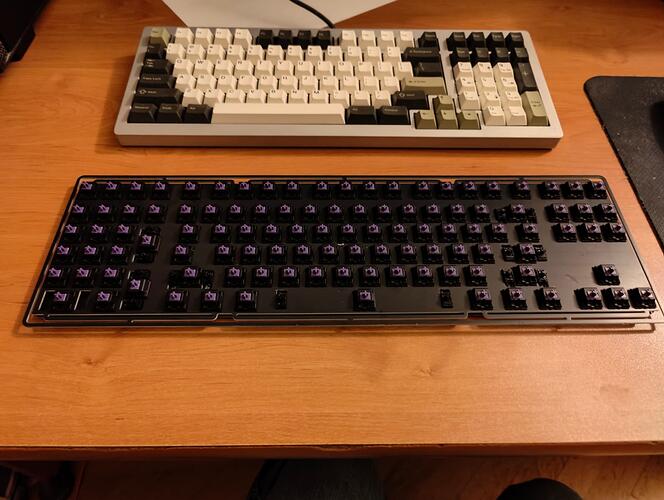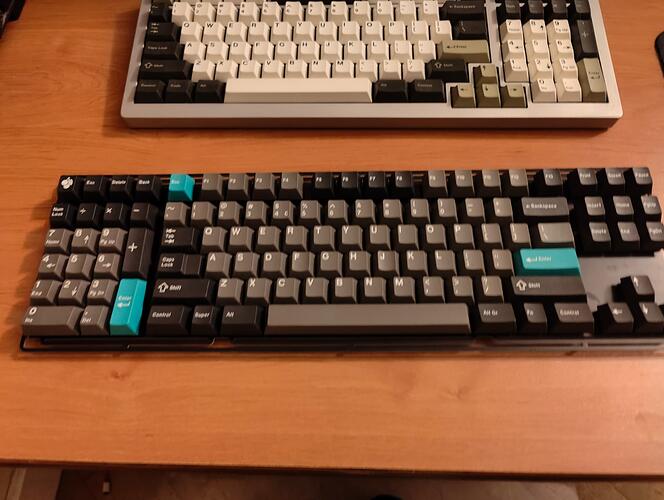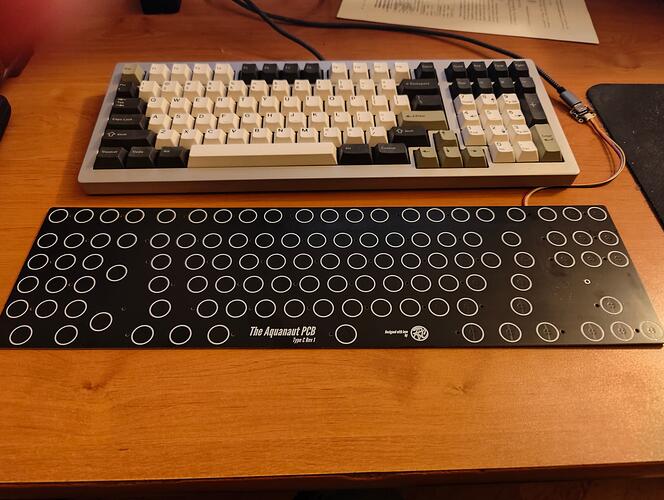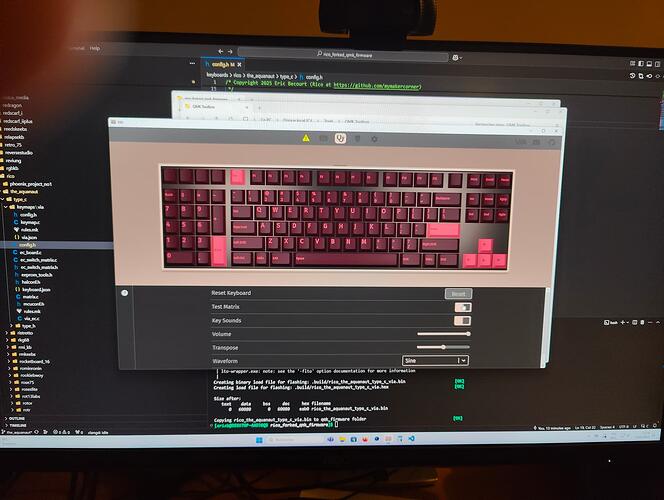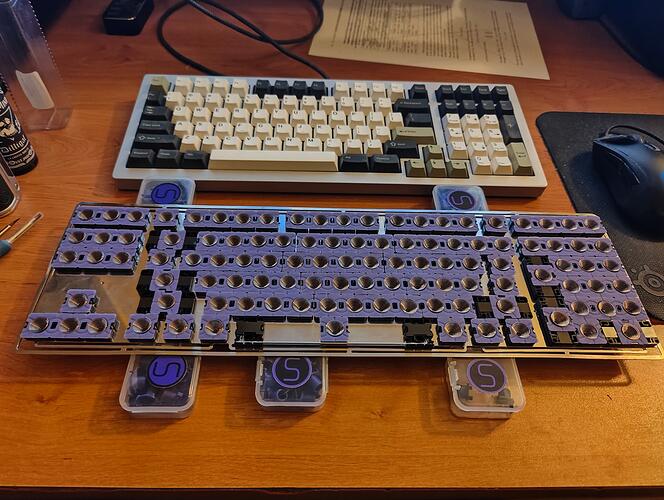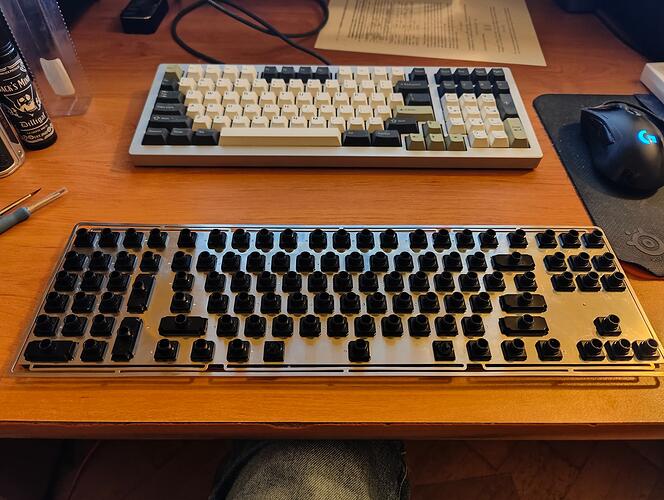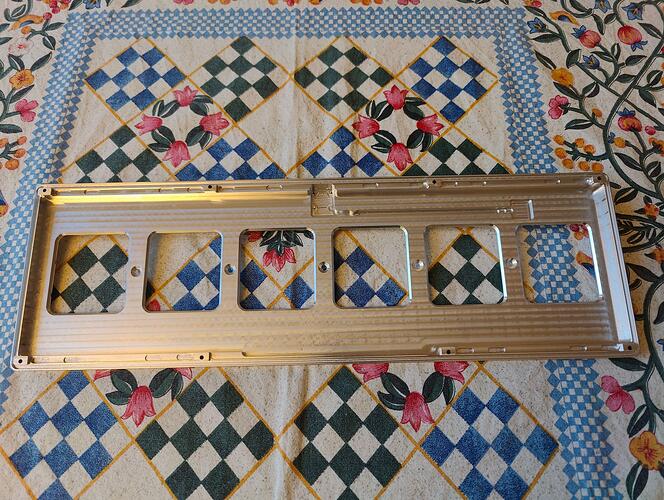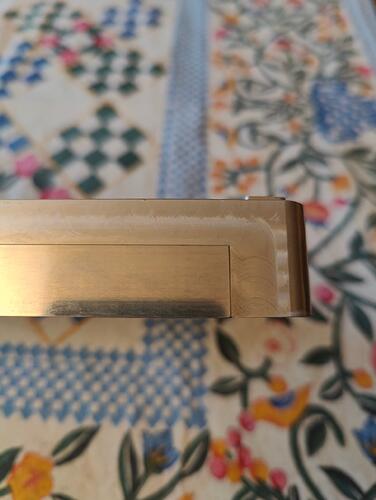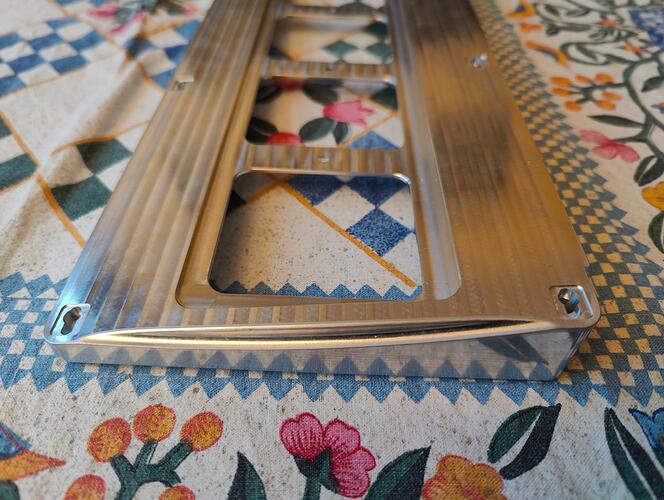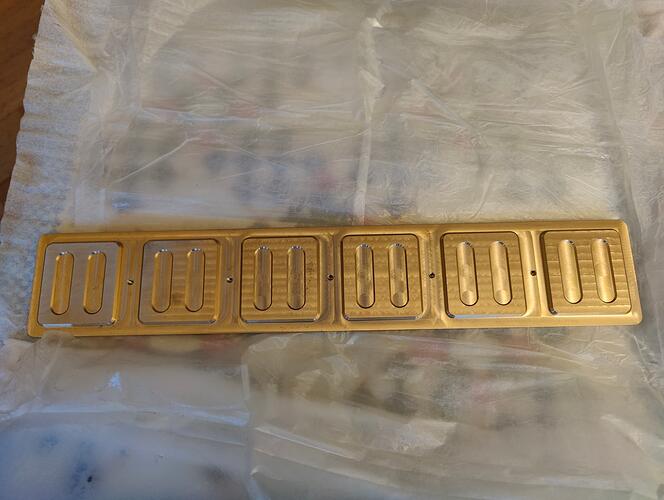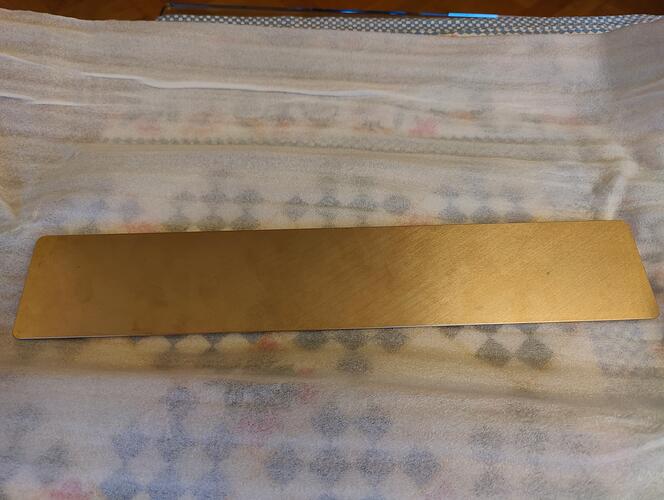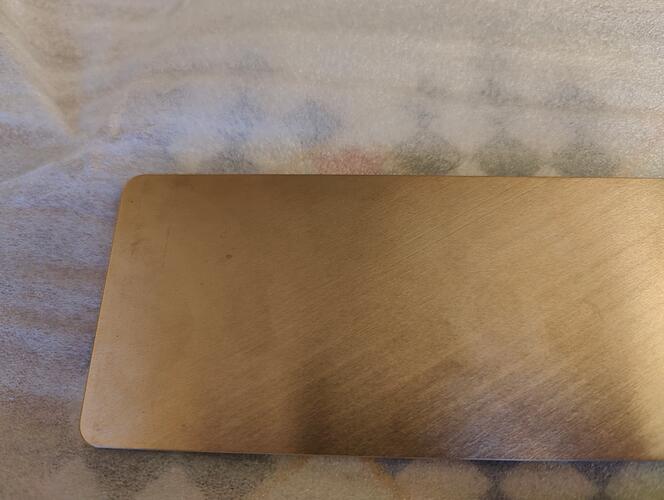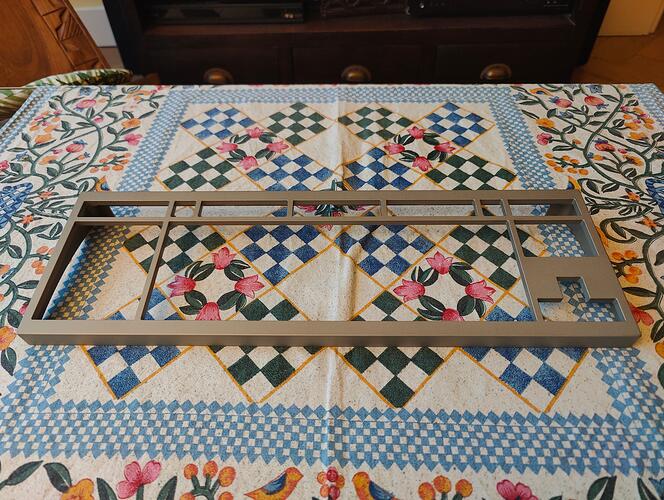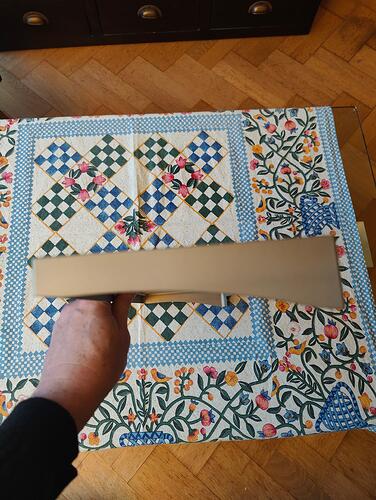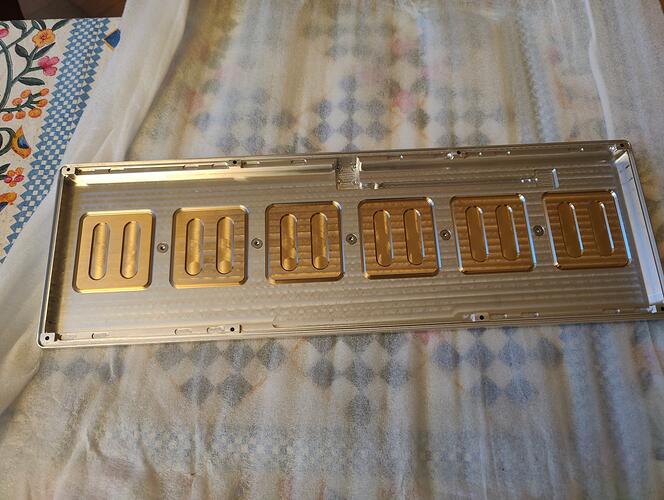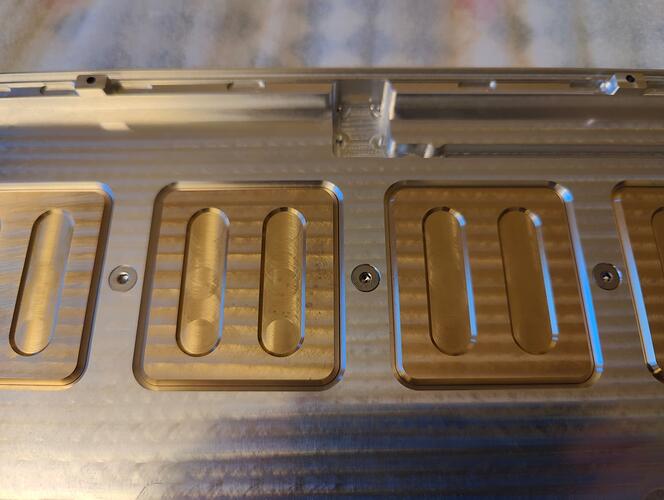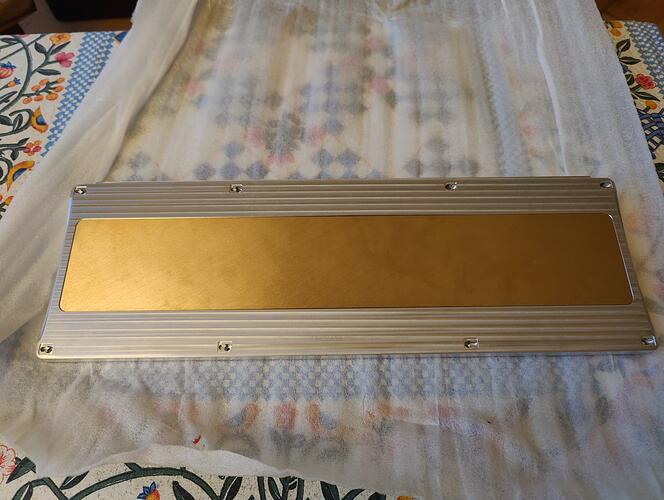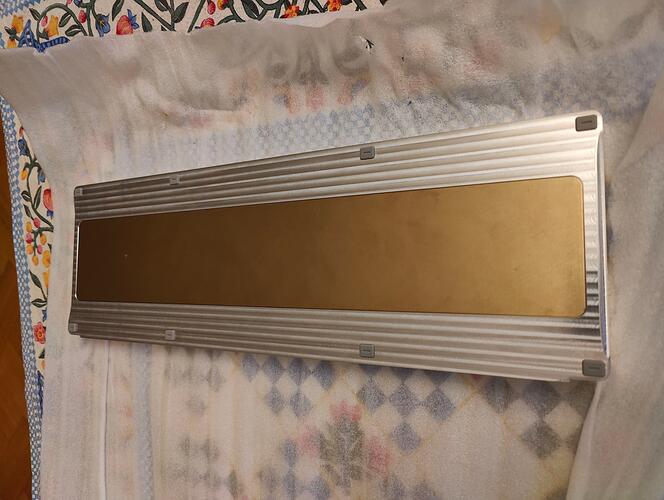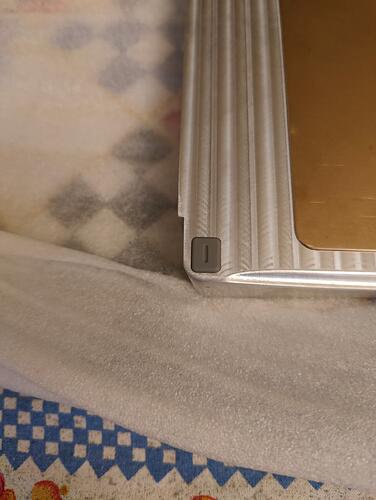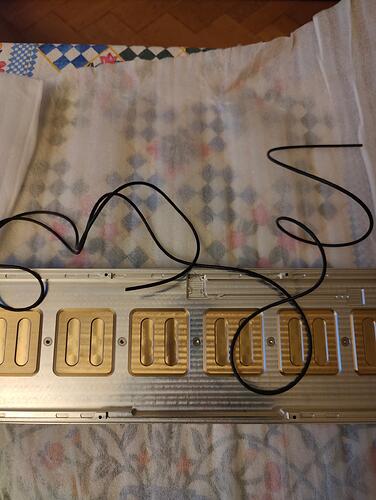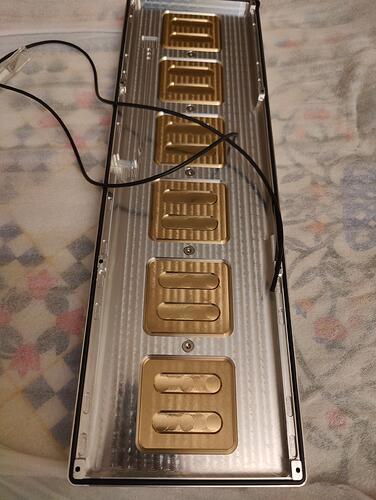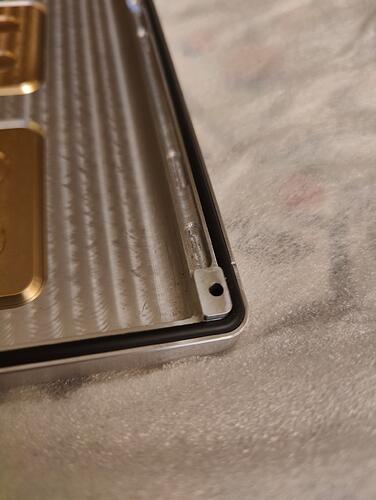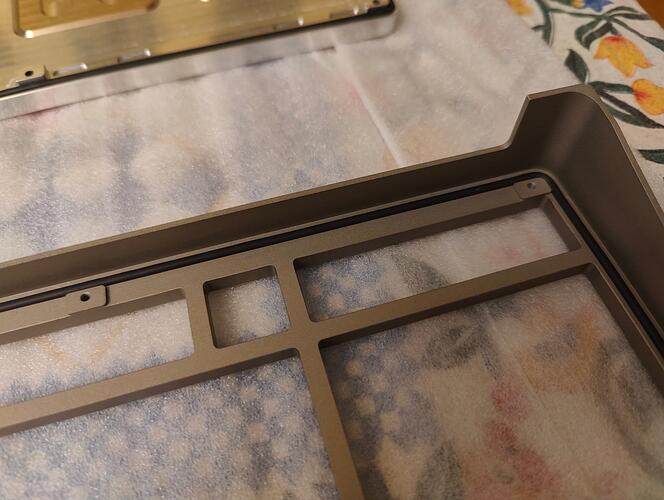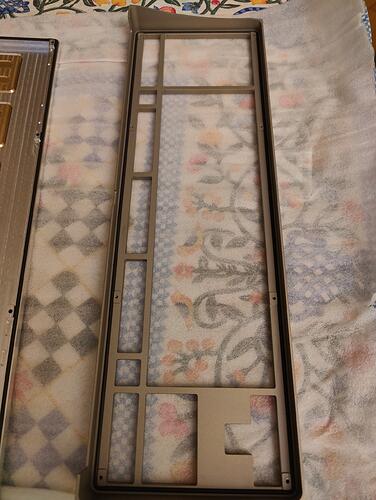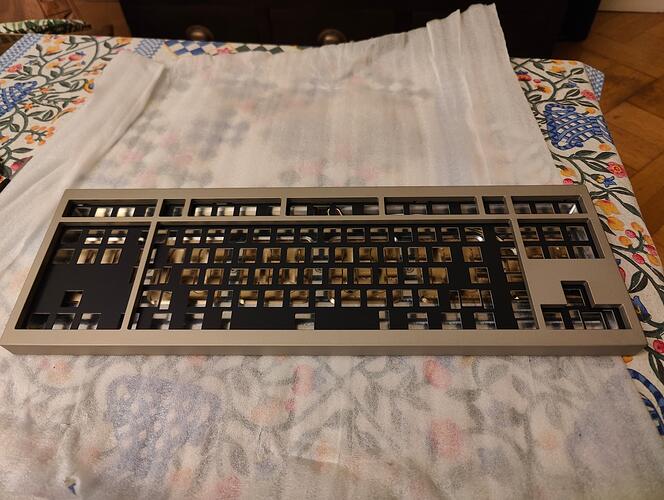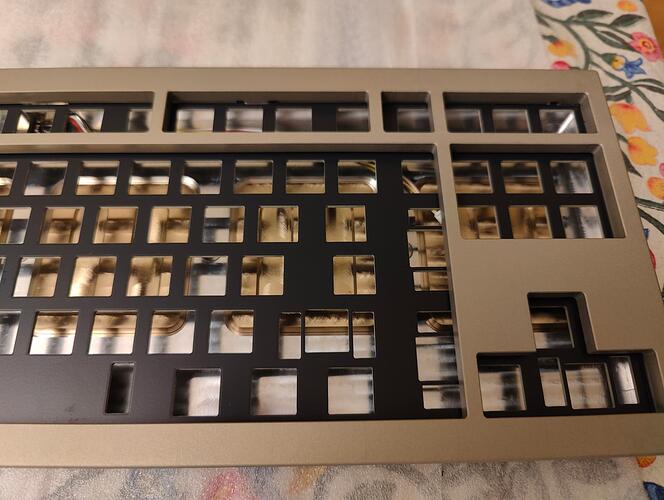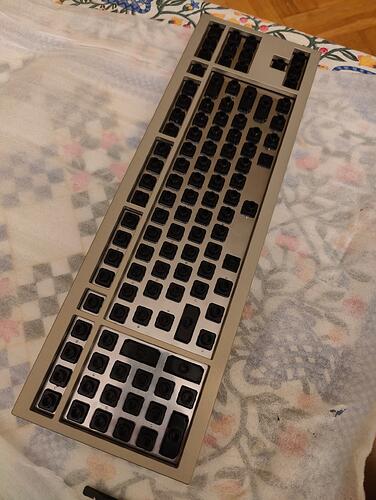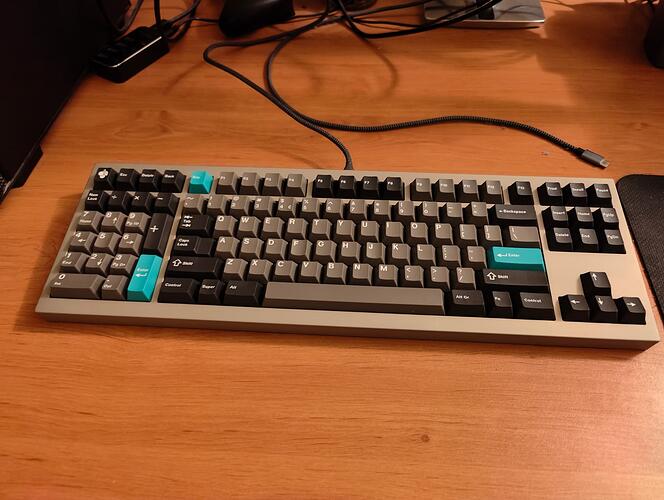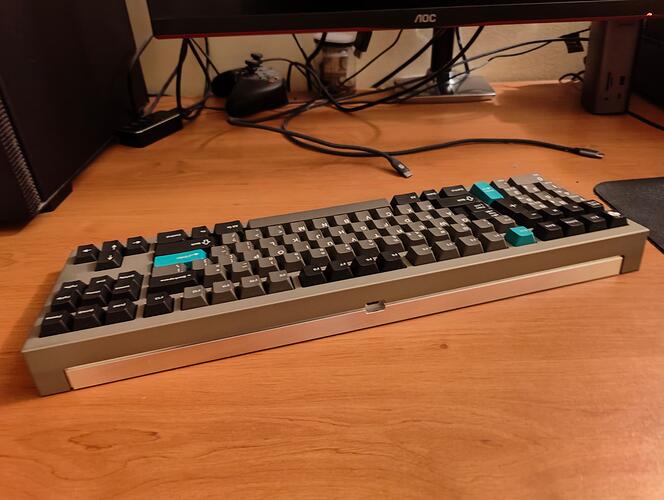I recieved my cases this week, time for the reveal !
I wanted most of my parts to look raw, as such both the alu 6061 bottom and the brass weight camed as machined. Also this allowed me to decrease the price a little bit as a result.
First the bottom part:
I am very satisfied with the machining quality.
You can see they did a good job by looking at the bottom left picture: This has been done in two different setups and with different tools, you can definitely see the machining marks but on your finger you feel nothing. This mark would completely disappear with a beadblast process.
The koala curve is nicely machined as well.
The weight:
It came covered with an ugly petroleum base oil that was smelling like hell. Once wipe out with a towel it looks much better.
The top:
The only part that had a post machining treatment.
I wanted to try hard coat anodize and studied a lot the colors that can take various aluminium aloys.
I decided to use 7075 as it takes a natural gold/brown color with hard coat.
I love the color, but the finish is not perfect, particularly on the side were the color is not totally uniform. You can barely see it in a normal light but with a good exposure it becomes obvious.
You may not have noticed in the first picture as it is very subtle but the top face has a pattern of vertical lines at regular intervals. You really have to look closely and with a direct lighting to see this but yet …
Those are not machining marks, the top was maintained at those exact places for the anodizing process to be effective.
Hard anodize consist of putting a lot of current on the piece, as a result the piece has to be in a firm current contact at many places for the process to be effective.
This is why the top face color is very uniform and the sides have a few gradients here and there.
This is not really the manufacturer fault, more a lack of knowledge on my part.
So if you want really good cosmetics while anodizing stay away from hard anodize and stick to type II, specially on very large parts like this one.
But the color is sooo nice otherwise !
Also it is extremely durable: I tried to scratch it with my xacto knife and it resulted in dulling my blade while the piece stayed intact, this is impressive !
To conclude I am overall quite satisfied with the parts, with the exception of the hard anodisation overall quality (but man, the color  ).
).
Next post will show how everything assemble together and my finished build !!!
![]()
